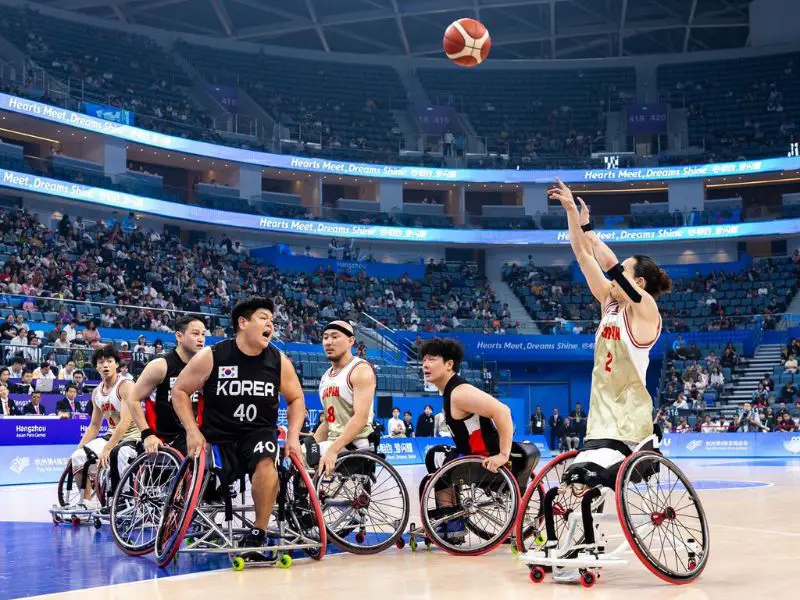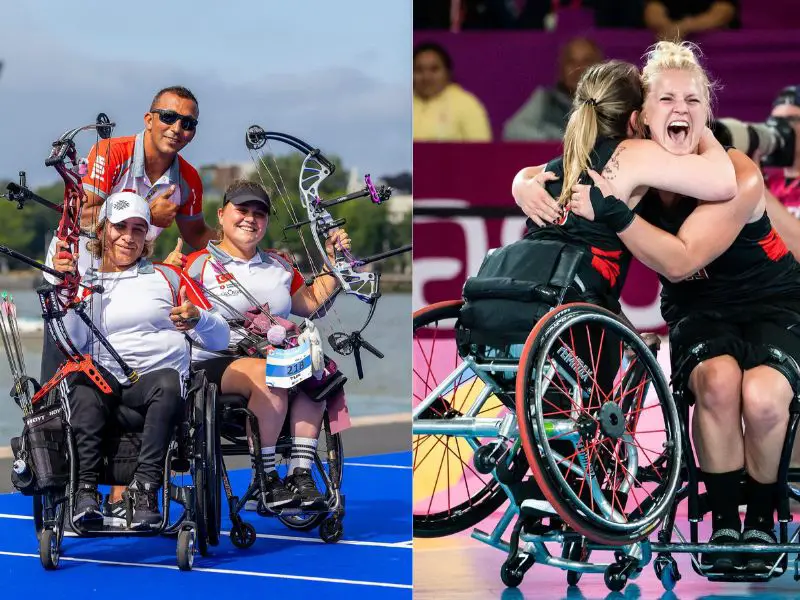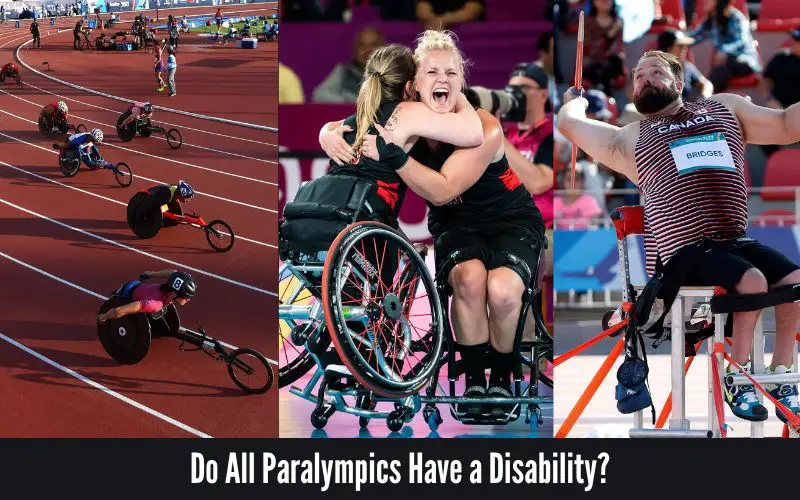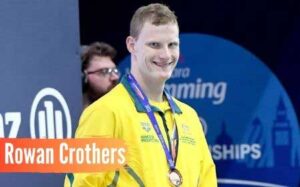Yes, all Paralympic events are specifically designed for athletes with disabilities.
Definition Of Disability
The Paralympics is a disabled sports event in which athletes with different disabilities participate. Paralympic athletes have various impairments, such as physical, sensory, or intellectual disabilities.
To understand the question “Do all Paralympics have a disability?”, we must first clarify the definition of disability.
According to the World Health Organization (WHO), disability is “an umbrella term, covering impairments, activity limitations, and participation restrictions.” Essentially, disability encompasses any condition or characteristic that may limit a person’s physical, sensory, or intellectual abilities.
Physical Disabilities
Physical disabilities refer to impairments that affect a person’s mobility or physical functioning. These disabilities can range from mild to severe and may include conditions such as:
- Cerebral palsy
- Spinal cord injury
- Amputation
- Muscular dystrophy
- Multiple sclerosis
Individuals with physical disabilities may face challenges with movements, coordination, and balance.
However, with determination and specialized equipment, many athletes with physical disabilities excel in sports, including those that are part of the Paralympic Games.
Sensory Disabilities
Sensory disabilities refer to impairments that affect a person’s ability to perceive or process sensory information. These disabilities can involve vision, hearing, or both, and include conditions such as:
- Visual impairment
- Hearing impairment
- Deafblindness
Athletes with sensory disabilities may face unique challenges in their respective sports. For example, visually impaired athletes may require guides or specialized equipment to compete effectively.
Similarly, athletes with hearing impairments may rely on visual cues and communication techniques tailored to their needs.
Intellectual Disabilities
Intellectual disabilities, sometimes referred to as cognitive disabilities, are characterized by limitations in intellectual functioning and adaptive behaviors.
These disabilities can affect a person’s ability to learn, reason, and solve problems. Some common examples of intellectual disabilities include:
- Down syndrome
- Autism spectrum disorder
- Intellectual developmental disorder
Athletes with intellectual disabilities showcase their skills and determination in various sports disciplines within the Paralympic Games.
While they may face unique challenges in training and competition, their participation demonstrates the inclusivity and diversity of the Paralympic movement.
Paralympics Events
Paralympic events are the pinnacle of athletic achievement for individuals with disabilities. These events showcase the incredible strength, skill, and determination of disabled athletes from all around the world.

The Paralympics have a wide range of events that cater to athletes with different types of disabilities, ensuring that all participants have the opportunity to compete at the highest level.
Physical Disability Events
Athletes with physical disabilities participate in a variety of events designed specifically for their abilities. These events focus on showcasing their physical strength, agility, and endurance.
From wheelchair racing to powerlifting, these athletes overcome the challenges posed by their disabilities and push their physical limits to achieve greatness on the global stage.
Some of the popular physical disability events at the Paralympics include:
- Wheelchair Racing: Athletes compete in various distances, from the 100m sprint to marathon races, using specially designed racing wheelchairs.
- Para Powerlifting: Participants lift the heaviest weights possible in different weight categories, showcasing their strength and determination.
- Para Athletics: This category includes a wide range of events, such as long jump, shot put, and javelin throw, where athletes compete by their specific physical disabilities.
Sensory Disability Events
Athletes with sensory disabilities, including visual and hearing impairments, have their own set of events at the Paralympics.
These events are designed to showcase their exceptional skills and abilities, allowing them to compete on an equal playing field with their peers.
Some of the sensory disability events at the Paralympics include:
- Goalball: This sport was specifically created for visually impaired athletes, who depend on their sense of hearing to locate and block a ball with bells inside.
- Blind Football: Players with visual impairments use their exceptional hearing and sense of touch to play soccer, relying on verbal cues from teammates and the sound of a ball with bells inside.
- Swimming: Athletes with visual impairments compete in races using tactile markers at the pool’s edge, allowing them to navigate and perform turns accurately.
Intellectual Disability Events

The Paralympics also include events for athletes with intellectual disabilities, recognizing their talents and offering an opportunity to showcase their abilities.
These events require not only physical skill but also mental focus and determination.
Some of the intellectual disability events at the Paralympics include:
| Event | Description |
|---|---|
| Swimming | Athletes with intellectual disabilities compete in various swimming events, showcasing their technique and speed in the water. |
| Athletics | A wide range of track and field events are available to athletes with intellectual disabilities, allowing them to demonstrate their strength and agility. |
| Cycling | Para-cycling events feature athletes with intellectual disabilities competing in road and track races, displaying their stamina and cycling skills. |
The Paralympic Games celebrate the incredible achievements of athletes with disabilities, showcasing their talent, determination, and resilience.
These events highlight the indomitable spirit of individuals who refuse to let their disabilities define them.
By competing in various events tailored to their abilities, Paralympians inspire and uplift millions of people around the globe, proving that disability is not a barrier to success.
Eligibility Criteria For Paralympics
The Paralympic Games are truly a celebration of human determination and resilience. Athletes from all corners of the world come together to showcase their extraordinary abilities.
To ensure fair competition, the Paralympics have strict eligibility criteria that focus on different types of disabilities.
Physical Disability Eligibility
To participate in the Paralympics, an individual must have a physical disability that significantly affects their mobility, strength, or coordination.
These disabilities can arise from various conditions, such as cerebral palsy, limb loss, spinal cord injuries, or muscular dystrophy.
Each sport within the Paralympic program has specific classification systems that classify athletes based on the extent of their impairment, ensuring a level playing field for all participants.
Sensory Disability Eligibility
Athletes with sensory disabilities have their own set of eligibility criteria. These disabilities include visual impairments, such as blindness or partial sight, and hearing impairments, ranging from complete deafness to partial hearing loss.
To qualify for the Paralympics, athletes with sensory disabilities must meet specific eligibility standards developed for their respective sports.
These standards take into account the level of impairment and its impact on the athlete’s performance, ensuring fair competition among participants.
Intellectual Disability Eligibility
Intellectual disabilities are another category considered for Paralympic eligibility. Athletes with intellectual disabilities have impairments in their cognitive functions that affect their learning, reasoning, and adaptive skills.
To compete in the Paralympics, athletes with intellectual disabilities must go through a comprehensive evaluation process to determine their level of impairment and eligibility for specific sports.
This rigorous evaluation ensures that athletes with intellectual disabilities can showcase their skills and compete on an equal footing with their peers.
Overall, the Paralympics have established distinct and rigorous eligibility criteria for athletes with physical, sensory, and intellectual disabilities.
These criteria not only ensure fair competition but also provide a platform for athletes to showcase their incredible abilities and inspire millions around the world.
The Paralympic Games serve as a reminder that disabilities do not define individuals’ potential, but rather, their determination and drive can propel them to achieve greatness.
Fairness And Inclusion In Paralympics
The Paralympics is an inclusive sporting event that celebrates the incredible talents and abilities of athletes with various disabilities.
It aims to provide a fair and equal platform for athletes to compete at the highest level, showcasing their skills and determination.
To ensure fairness and inclusion in the Paralympics, several important factors come into play, including the classification system, doping regulations, and advocacy for inclusion.
Classification System
The classification system in Paralympics is crucial for ensuring fair competition among athletes with different disabilities.
Classifiers evaluate athletes based on the extent of their impairments and assign them to specific sports classes.
This classification process helps to level the playing field, ensuring that athletes of similar abilities compete against each other.
It ensures fair competition and allows athletes to showcase their skills without any undue advantage.
Doping Regulations
Doping is strictly prohibited in the Paralympics, just like in the Olympics. The World Anti-Doping Agency (WADA) governs anti-doping regulations in the Paralympic Games.
Athletes are subject to rigorous drug testing, and any violation can lead to disqualification and potential bans.
These regulations serve to maintain the fairness and integrity of the Paralympics by ensuring that all athletes compete on a level playing field, free from the influence of performance-enhancing substances.
Advocacy For Inclusion
Advocacy for inclusion is a fundamental pillar of the Paralympic movement. The Paralympics not only promotes inclusivity within the games but also strives for greater inclusion in society as a whole.
This includes initiatives to improve accessibility, promote equal opportunities, and challenge stereotypes and prejudices.
The Paralympic Games serve as a platform to raise awareness about the capabilities of athletes with disabilities and advocate for a more inclusive world.
Conclusion
In the realm of Paralympics, disabilities are the norm rather than an exception. Athletes from various backgrounds and conditions come together to showcase their extraordinary abilities and redefine what it means to excel in sports. The Paralympics embody the principles of inclusivity, equality, and determination.
It serves as a powerful reminder that disabilities need not hinder one’s dream of sporting success. By recognizing and celebrating the skills of athletes with disabilities, the Paralympics inspire us all to push our boundaries and embrace diversity.






